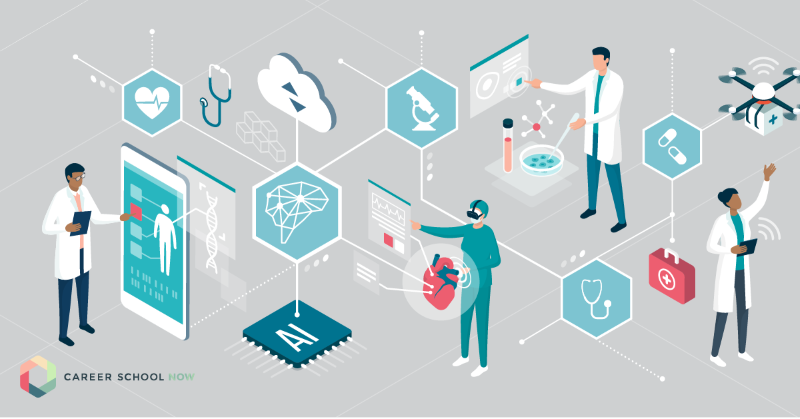Why Medical Administration is Vital for Smooth Health Care Workflow
Why Medical Administration is Vital for Smooth Health Care Workflow
Blog Article
Best Practices in Medical Administration for Improving Efficiency and Reducing Costs
In the ever-evolving landscape of healthcare, the pursuit of finest techniques in clinical management is vital for boosting efficiency and curbing expenditures. By incorporating innovative innovations such as digital health and wellness documents and telemedicine, health care service providers can enhance operations and improve client care. Nevertheless, technology alone is not a remedy; optimizing resource allowance and fostering collaborative communication among treatment teams are similarly crucial (medical administration). As companies make every effort to stabilize quality and expense, what techniques should be prioritized to accomplish these twin objectives? The solution to these inquiries hold the trick to an extra sustainable medical care system.
Leveraging Advanced Modern Technology
In today's rapidly evolving healthcare landscape, leveraging sophisticated modern technology is no more optional however important for reliable medical administration. The combination of digital services right into medical care systems has actually transformed the way facilities operate, improving processes and improving patient care. Electronic Wellness Records (EHRs) are crucial, offering thorough person information that can be accessed immediately by authorized personnel, thus decreasing redundancy and minimizing mistakes. By streamlining client information, EHRs get rid of the requirement for difficult documentation and help with seamless interaction amongst doctor.
Telemedicine is one more technological improvement that has actually reinvented individual interaction. It uses ease for both patients and healthcare experts by making it possible for remote examinations, which can minimize the need for in-person check outs and maximize appointment scheduling. Furthermore, telehealth systems can expand medical care accessibility to country or underserved areas, linking gaps in treatment shipment.
Furthermore, using Expert system (AI) and maker learning is ending up being progressively prevalent in anticipating analytics, permitting very early discovery of possible health concerns and more educated decision-making. These innovations, when incorporated successfully, can improve diagnostic accuracy and personalize patient treatment plans, eventually bring about improved healthcare results and functional effectiveness.
Optimizing Source Allotment
Efficient source allocation is essential for taking full advantage of the effectiveness of clinical management. By purposefully managing sources such as personnel, devices, and funds, health care facilities can considerably boost their operational performance, boost patient end results, and lower unnecessary expenditures. The very first step in enhancing resource appropriation entails carrying out a thorough assessment of existing properties and determining areas where sources may be underutilized or overextended. This analysis ought to be data-driven, using metrics and analytics to educate decision-making processes.
Focusing on source allotment based on patient requirements and service needs is crucial. Applying adaptable staffing versions can likewise optimize labor sources by adjusting personnel allocation in response to rising and fall client quantities.
Funds need to be carefully kept track of and allocated with calculated foresight to sustain both temporary operational requirements and long-lasting institutional goals. This consists of investing in training programs that boost staff competencies and adopting energy-efficient techniques that decrease operational prices (medical administration). Ultimately, an enhanced resource appropriation approach fosters a lasting health care setting that is receptive, reliable, and financially sensible
Streamlining Operations Procedures
When health care centers goal to enhance functional efficiency, enhancing operations procedures comes to be a pivotal emphasis. Efficient operations decrease redundancy, remove unnecessary actions, and enhance control amongst health care experts. This technique not just site accelerates solution delivery yet also improves the quality of individual care.

Following, modern technology assimilation plays a considerable function in simplifying operations. Applying digital health documents (EHRs) and digital medical professional order entrance (CPOE) systems minimizes documentation, minimizes human mistake, and guarantees information comes to all relevant personnel. In addition, leveraging telemedicine systems can simplify client examinations and follow-ups, reducing the strain on physical framework.

Inevitably, structured workflows lead to cost reductions and boosted individual satisfaction, fostering a more sustainable healthcare environment.
Enhancing Data Monitoring
Building upon structured workflows, maximizing information management comes to be a vital component in advancing health care administration. Efficient information administration systems are important for maintaining exact patient records, boosting decision-making, and guaranteeing compliance with regulatory standards. By implementing robust information management remedies, healthcare centers can boost the high quality of patient treatment while at the same time decreasing operational prices.
One key aspect of enhancing information management is the combination of innovative digital health record (EHR) systems. These systems assist in the smooth exchange of client information throughout different divisions, minimizing replication of examinations and lessening errors. A properly designed EHR system supports data analytics, allowing healthcare companies to identify fads and make educated choices regarding patient treatment.
Moreover, securing patient information is extremely important. Taking on comprehensive cybersecurity procedures, including security and normal audits, ensures the integrity and discretion of sensitive info. This not just protects clients yet additionally preserves the organization's reputation.
Spending in personnel training is an additional critical aspect. Informing healthcare professionals on Get More Information information monitoring practices enhances their ability to properly use innovation, leading to enhanced individual outcomes. In final thought, enhancing information monitoring through advanced technology and extensive training is necessary for accomplishing performance and price reduction in medical administration.
Fostering Collaborative Interaction
A critical component in advancing medical management is promoting collective communication amongst health care professionals. Reliable interaction is extremely important for guaranteeing seamless individual treatment, maximizing therapy end results, and decreasing errors. By encouraging open discussion and sychronisation across multidisciplinary teams, medical care companies can improve their operational efficiency and decrease unnecessary prices.
Central to this approach is the integration of interaction innovations such as electronic health documents (EHRs) and secure messaging systems, which help with the rapid exchange of critical patient information. These devices make it possible for doctor to gain access to and share information in actual time, making sure that all staff member are educated and aligned in their decision-making processes. Normal group conferences and interdisciplinary rounds can further promote a society of cooperation and responsibility.
Training programs concentrated on boosting communication skills are also crucial. These programs can aid staff develop the capability to communicate info plainly and pay attention proactively, hence lowering misconceptions and promoting a supportive job setting. In addition, embracing standard interaction procedures, such as SBAR (Situation, History, Evaluation, Recommendation), can streamline the exchange of info, ensuring that critical details are conveyed succinctly and efficiently. Ultimately, fostering collaborative interaction results in boosted health here care delivery and cost financial savings (medical administration).

Final Thought
Incorporating innovative modern technology, such as digital wellness documents and telemedicine, alongside optimized resource allowance and structured process procedures, is crucial for improving efficiency in medical management. Effective information management and fostering joint communication among healthcare teams are essential for reducing redundancies and improving care high quality. By focusing on preventive care and involving in quality enhancement initiatives, medical care companies can accomplish considerable cost savings and boosted client outcomes, therefore making sure lasting healthcare delivery in an increasingly complicated environment.
Report this page